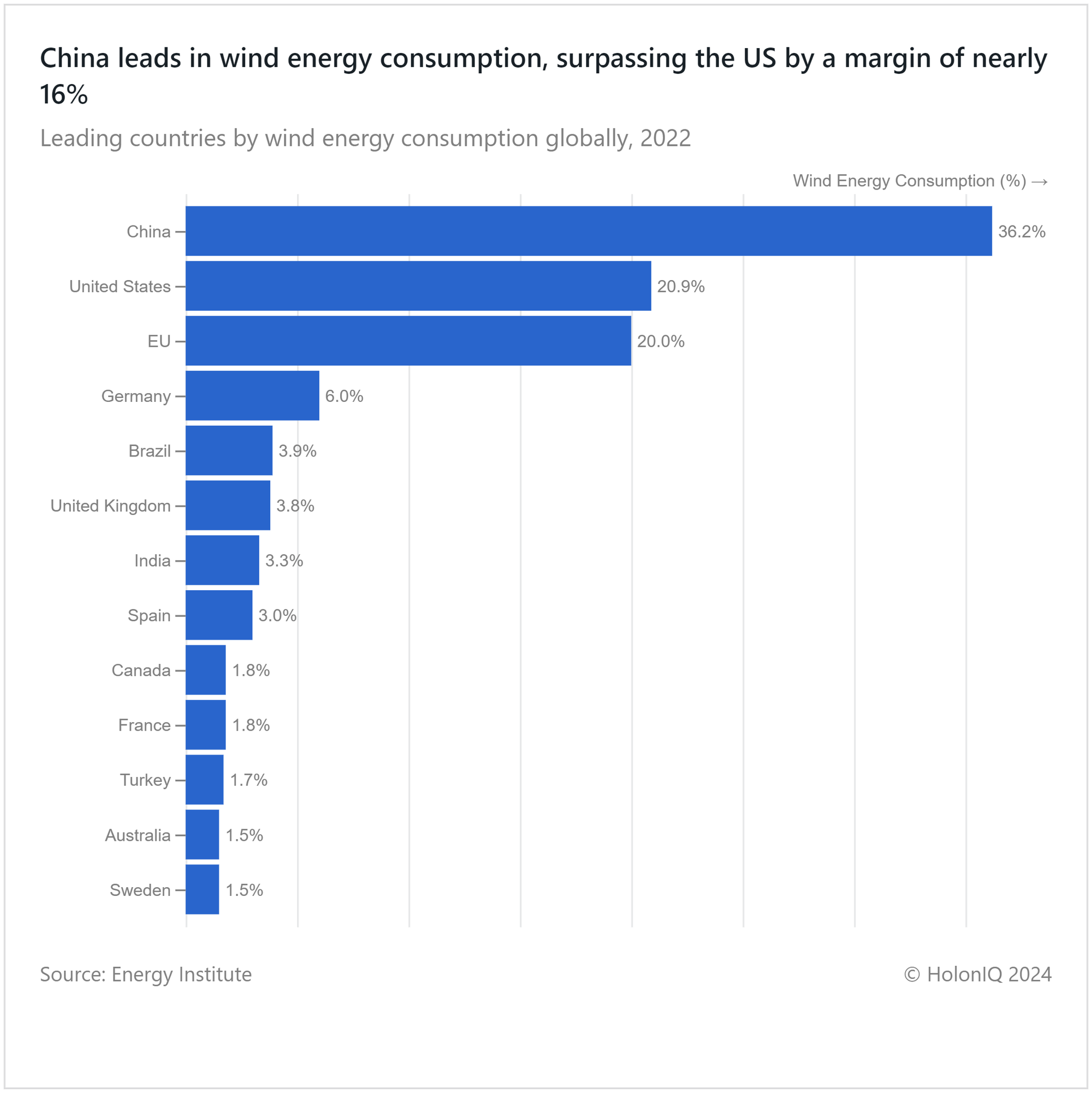🧑💼 2x Workplace Learning Hours. China > US Wind Energy. Smartphone Rankings.
Chart of the Day #86 looks at Workplace Learning Hours, Wind Energy Consumption and Smartphone Sales.
Privet 👋
US electricity generation from wind energy fell for the first time since the mid-1990s, despite installing 6.2GW of wind capacity over the past year. AI hardware emerges in 2024 but faces criticism for its performance compared to a normal smartphone. Despite this, optimism remains due to its early production phase.
Today's Topics
🧑💼 Learning Hours. Workplace learning hours double, crossing 63 hours
💨 Wind Energy. China surpasses US in wind energy consumption by 16%
📱 Smartphones. Nokia 1100 reigns as the most-sold phone of all time
For unlimited access to over one million charts, request a demo.
🧑💼 Workplace Learning Hours Double, Crossing 63 Hours
The COVID-19 pandemic prompted a rapid digital transformation across industries, highlighting the need for a skilled and adaptable workforce. This trend persisted into 2021, with employee learning hours nearly doubling compared to 2020. This increase can be attributed to job losses and resignations, resulting in knowledge gaps within companies that necessitated extensive training for remaining employees. The rise in technologies and the shift to a hybrid work model also required employees to learn new skills and adapt to new work environments.
While large companies saw a significant increase in training hours in 2020, this trend extended to smaller and medium-sized businesses in 2021. This suggests a growing recognition across organizations of the importance of continuous learning and employee development. Companies are investing heavily in employee training, with learning expenses rising by 10.5% in 2021. Given the evolving skill gap and the dynamic nature of work, the ability to learn effectively has become a critical skill.
💨 China Surpasses US in Wind Energy Consumption by 16%

In 2022, China surpassed the United States by a significant margin, consuming 36% of the world’s wind energy. This lead is likely to continue as China has set more goals for wind energy production. China’s vast geographic size provides the country with substantial wind resources, both onshore and offshore. The Gansu Wind Farm in China is the world’s largest onshore wind farm, with a capacity of 7.9 gigawatts (GW). This is five times larger than its nearest competitor.
China’s investment in wind energy is driven by a number of factors, including a desire to reduce air pollution and greenhouse gas emissions and to diversify the country’s energy mix. Wind energy is a clean and renewable resource that can help China meet its growing energy demand in a sustainable way.
Wind energy is becoming more cost-competitive with coal and natural gas, thanks to technological advancements. Governments globally are supporting renewable energy, by providing subsidies and incentives, such as the UK government's decision to increase offshore wind subsidies by 66%. China's investment in wind energy is expected to drive global growth in its use.
📱 Nokia 1100 Reigns As the Most-Sold Phone of All Time
The Nokia 1100 leads as the highest-selling mobile phone, achieving over 250M sales in its six-year lifespan (2003-2009). Affordability, basic functionality, and a compact design fueled its success, particularly in emerging markets, even during the rise of early smartphones (Nokia E-series and the iPhone). Following closely is its variant, the Nokia 1110, which sold 248M units. Apple's iPhone 6 and 6 Plus, collectively selling 222M units, secured the third spot. Their introduction of larger screens ushered in the big-screen smartphone era, solidifying their position as Apple's top sellers—so much so that they were re-released in 2017.
Nokia and Apple devices dominate the remaining top ranks, with the only exceptions being the Samsung E1100 and Motorola RAZR V3. Nokia, pioneering the first mobile phone in 1982, captured the market by catering to developing economies during telecom expansion. Conversely, Samsung faced tougher competition in the diverse Android market, which limited its ability to match Nokia's initial success. In the last decade, Nokia and Apple took different routes. Nokia thrived initially but struggled during the smartphone transition, leading to its acquisition by Microsoft in 2014 and later sale to HMD Global. Meanwhile, Apple maintained its dominance in the US, but Samsung emerged as the global leader with a 20.8% market share, surpassing Apple's 17.3% in Q1 2024.
Like getting this newsletter? For unlimited access to over one million charts, request a demo.
Thank you for reading. Have a great week ahead!
Have some feedback or want to sponsor this newsletter? Let us know at hello@holoniq.com
